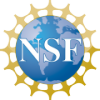The Computing Community Consortium (CCC) has recently released a workshop report from the May 2018 workshop Next Steps in Quantum Computing: Computer Science’s Role. The report highlights how computer scientists can contribute to advances in quantum computing and identifies key trends and research needs in five areas: algorithms, devices, architecture, programming models and toolchains, and verification. Some research needs identified in the report include: The need for new Quantum Computing algorithms that can make use of the limited qubit counts and precisions available in the foreseeable future. The need for research regarding how best to implement and optimize programming, mapping, and resource management for QC systems through the functionality in […]
Computing Community Consortium Blog
The goal of the Computing Community Consortium (CCC) is to catalyze the computing research community to debate longer range, more audacious research challenges; to build consensus around research visions; to evolve the most promising visions toward clearly defined initiatives; and to work with the funding organizations to move challenges and visions toward funding initiatives. The purpose of this blog is to provide a more immediate, online mechanism for dissemination of visioning concepts and community discussion/debate about them.
Archive for the ‘research horizons’ category
CCC Quantum Computing Workshop Report and NSF Quantum Solicitation
November 15th, 2018 / in Announcements, NSF, pipeline, research horizons / by Khari DouglasNITRD RFI- Update to the 2016 Federal Cybersecurity Research and Development Strategic Plan
November 13th, 2018 / in Announcements, policy, research horizons, Research News / by Helen WrightThe Networking and Information Technology Research and Development (NITRD) National Coordination Office (NCO) put out a Request for Information (RFI) on the Federal cybersecurity R&D strategic plan. The updated plan will be used to guide and coordinate federally funded research in cybersecurity, including cybersecurity education and workforce development, and the development of consensus-based standards and best practices in cybersecurity. The most recent version of the strategic plan was released in February 2016. This strategic plan identifies four categories of defensive capabilities (deter, protect, detect, adapt) and six critical dependent areas (scientific foundations, risk management, human aspects, transition to practice, workforce development, and infrastructure for research) as the structure for focusing and coordinating Federal cybersecurity R&D activities. The […]
2018 ACM Distinguished Members Recognized
November 12th, 2018 / in Announcements, CCC, research horizons, Research News / by Helen WrightThe Association for Computing Machinery (ACM), has named 49 Distinguished Members for outstanding contributions to the field. These 2018 Distinguished Members are exemplars for their peers and represent ACM’s worldwide geographic reach, as well as the exciting range of subdisciplines that constitute today’s technology landscape. One of this year’s distinguished members is former Computing Community Consortium (CCC) Council member Vasant Honavar from the Pennsylvania State University. The ACM Distinguished Member program, initiated in 2006, recognizes those members with at least 15 years of professional experience who have made significant accomplishments or achieved a significant impact on the computing field. ACM Distinguished Membership recognizes up to 10% of ACM’s top members. Congrats, Vasant!
CCC Robotic Materials Workshop Report
November 8th, 2018 / in Announcements, CCC, research horizons, Research News, workshop reports / by Helen WrightIn April 2018, the Computing Community Consortium (CCC) held a Robotic Materials workshop in Washington, DC. This workshop was the second in a series of interdisciplinary workshops aimed at transforming our notion of materials to become “robotic”, that is have the ability to sense and impact their environment. Robotic materials has the potential to constitute a new material age in which man-made materials that mimic the complexity of biological tissue that includes muscles, nerves, and vascular systems become common place. The workshop report has been published here. From the report: The trend of materials becoming systems that integrates sensing, actuation or computation already exists, both in industry and government agencies. At the […]
Google Launches “AI for Social Good” Program
November 7th, 2018 / in AI, research horizons, Research News / by Helen WrightGoogle has launched an “AI for Social Good” program to support artificial intelligence research and engineering with a focus on developing solutions for a range of global challenges. From an October 29th Google Blog post by Jeff Dean (Google AI): For the past few years we’ve been applying core Google AI research and engineering to projects with positive societal impact, including forecasting floods, protecting whales, and predicting famine. Today we’re unifying these efforts in a new program called AI for Social Good. We’re applying AI to a wide range of problems, partnering with external organizations to work toward solutions. The program will apply these core research and engineering efforts to AI projects with the potential to create positive […]
USDOT Request for Comment on Preparing the Future of Transportation: Automated Vehicles
November 5th, 2018 / in Announcements, pipeline, policy, research horizons, Research News / by Helen WrightThe U.S. Department of Transportation (DOT) is committed to facilitating a new era of transportation innovation and safety and ensuring that our country remains a leader in automation. It is acting as a convener and facilitator, partnering with a broad coalition of industry, academic, states and local, safety advocacy, and transportation stakeholders to support the safe development, testing, and deployment of automated vehicle technology. Recently, the DOT put out a request for public comment on the document, Preparing for the Future of Transportation: Automated Vehicles 3.0 (AV 3.0). This document builds upon Automated Driving Systems: A Vision for Safety 2.0 and expands the scope to all surface on-road transportation systems, and was developed through the input […]








